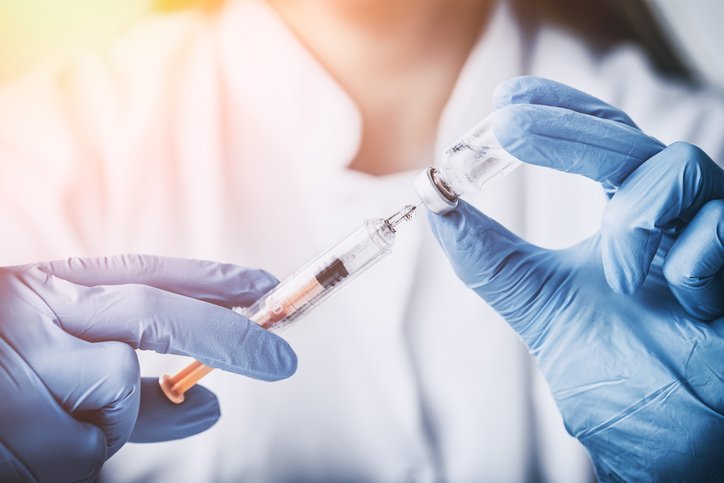Definition of Anesthesia – This course is designed to understand the concept of community health nursing: nurses’ roles and interventions in family health, school health, occupational health, environmental health, elderly health care, gender issues, disaster management and principles and terminology of epidemiology. The aim of the course is to acquire knowledge and skills in community health nursing.

Definition of Anesthesia
It is a pharmacologically induced and reversible state of amnesia, analgesia, loss of responsiveness, loss of skeletal muscle reflexes or decreased stress response, or all simultaneously.
(Ref by-Bailey & Love/26/239)
Anesthesia refers to the practice of administering medications either by injection or by inhalation (breathing in) that block the feeling of pain and other sensations, or that produce a deep state of unconsciousness that eliminates all sensations, which allows medical and surgical procedures to be undertaken without causing undue distress or discomfort.
Types of Anesthesia:
There are three main categories of anesthesia, each having many forms and uses. They are:
1. General anesthesia (G/A)
2. Regional anesthesia
3. Local anesthesia (L/A)
| Local anesthesia | An anesthetic drug (which can be given as a shot, spray, or ointment) numbs only a small, specific area of the body (for example, a foot, hand, or patch of skin). With local anesthesia, a person is awake or sedated, depending on what is needed. Local anesthesia lasts for a short period of time and is often used for minor outpatient procedures (when patients come in for surgery and can go home that same day). For someone having outpatient surgery in a clinic or doctor’s office (such as the dentist or dermatologist), this is probably the type of anesthetic used. The medicine used can numb the area during the procedure and for a short time afterwards to help control post-surgery discomfort. |
| Regional anesthesia | An anesthetic drug is injected near a cluster of nerves, numbing a larger area of the body (such as below the waist, like epidurals given to women in labor).Regional anesthesia is generally used to make a person more comfortable during and after the surgical procedure. Regional and general anesthesia are often combined. |
| General anesthesia. | The goal is to make and keep a person completely unconscious (or “asleep”) during the operation, with no awareness or memory of the surgery. General anesthesia can be given through an IV (which requires sticking a needle into a vein, usually in the arm) or by inhaling gases or vapors by breathing into a mask or tube. |
Types of Anesthetics:
a) Local anesthetics:
- Surface (topical) anesthetics:
✓ Xylocaine
✓ Cocaine
✓ Benzocaine
✓ Betacaine
✓ Tetra Caine
- Infiltration anesthetics:
✓ Xylocaine
✓ Cocaine
✓ Procaine
- Nerve block, eg. Pudendal block.
Spinal/intra-thecal/subarachnoid } Xylocaine, Procaine, Tetracaine
Extradural/Epidural and caudal: - Intravenous: The drug is injected IV, eg. Anesthesia of arm.
✓ Xylocaine
✓ Procaine
b) General anesthetics (G/A):
1) Volatile or inhalation anesthetic.
- Gases:
✓ N₂O (Nitrous oxide)
✓ Ethylene
✓ Cyclopropans
- Liquid:
Halothane
✓ Chloroform
✓ Vinyl ether
✓ Ethyl chloride
✓ Diethyl ether
✓ Trichloro ethylene
2) Nonvolatile or IV anesthetics:
- Steroidal:
✓ Althesin
✓ Na-hydroxy succinate
- Non-steroidal sodium:
✓ Thiopental sodium
✓ Hexobarbitone
✓ Ketamine hydrochloride
- Rectal anesthetics:
✓ Paraldehyde
✓ Tribromoethanol

Definition of G/A:
A state of unconsciousness produced by anesthetic agents, with absence of pain sensation over the body and greater or lesser degree of muscular relaxation. There is also amnesia and analgesia during by the anesthetic agents.
➤Stage of general anesthesia:
a) Stage-1(stage of analgesia):
✔ Respiration-more or less normal.
✔ Pupil-normal
✔ Eyeball-normal
✔ Eye reflex-present
✔ Pulse-mild increased
✔ Muscle tone-normal
b) Stage 2 (stage of delirium):
✔ Respiration-irregular
✔ Pupil – Dilated
✔ Eyeball-side to side movement
✔ Eye reflex-present
✔ Pulse-moderately increased
✔ Muscle tone mild increase.
c) Stage-3 (stage of surgical anesthesia)
| Plane-1 | Plan-2 | Plan-3 | Plan-4 | |
| Respiration | Full regular | Slow regular | Thoracic: normal Abdominal: normal | T-stops A-Depress |
| Pupil | Constricted | Dilated | Widely dilated | Maximal dilatatic |
| Eyeball movement | Rolling | Fixed | Fixed | Fixed |
| Eye reflex | Conjunctival reflex lost | All reflex lost | All reflex lost | All reflex lost |
| Pulse | Normal | Normal | Moderately increase | Moderately increase |
| Muscle tone | Decrease | loss | Relaxation | paralyzed |
d) Stage-4 (Stage of medullary paralysis):
✔ Respiration-Failure
✔ Pupil-Maximum dilated
✔ Eyeball movement – fixed
✔ Eye reflex-all reflex lost
✔ Pulse-circulatory failure
✔ Muscle tone-paralyzed

Define anesthetic premedication. Mention the drugs used in pre- anesthetic medication
Definition: Administration of drugs before and during operation, in addition to GA, to make the anesthesia safe and agreeable to the patient is called pre-anesthetic medication.

Drugs Used in Pre-Anesthetic Medication:
a) For sedation:
- Barbiturate (phenobarbitone 100-200mg)
- Non-barbiturate (Diazepam 5mg)
b) For suppressing respiratory, salivary secretion and reflex excitability
- (Atropine sulphate 0.6mg): 1 ample I/M given at least 20-30 minutes before operation.
c) To prevent bronchospasm, hypotension and vomiting:
- Promethzine hydrochloride (phenargan 50mg, IM)
- Chlorpheneramine mlate (Histacin 50mg, lamp. IM)
d) To relief pain and production of sedation:
- Injection-Pethidine 100mg, IV or IM
- Injection-Morphine 15mg, IV or IM
Post-Operative Complication of General Anesthesia (G/A):
- Cardiovascular:
✓ Hypotension
✓ Hypertension
✓ Arrhythmia
✓ LVF
✓ Cardiac arrest
- Gastrointestinal system:
✓ Nausea
✓ Vomiting
✓ Regurgitation
- Chest complication:
✓ Atelectasis
✓ Bronchopneumonia
✓ Acute bronchitis
✓ Lung abscess
- Thrombosis of leg veins
- Carbon dioxide retention
- Postoperative pain
- Mechanical injuries
✓ Injuries to oral cavity, pharynx, larynx, trachea.
✓ Postural nerve palsies
- Delayed toxic effects of the anesthetic drugs
✓ Delayed hepatitis
✓ Delayed renal failure
- Other
✓ Retention of urine
✓ Agitation and restlessness
✓ Hypothermia
Complication of Endotracheal Intubation:
- Accidental and unrecognized oesophageal intubation
- Accidental intubation of main bronchus
- Trauma to larynx, trachea or teeth
- Aspiration of vomitus during neuromuscular blockade for intubation.
- Failure to intubation and loss of airway control
- Disconnection or blockage of the tube.
Complication of General Anesthesia (G/A)
a) Cardiovascular disease (CVS) disease:
- Uncontrolled hypertension
- IHD (Ischemic heart disease)
- Cardiac failure
- Arrhythmia
b) Respiratory disease:
- RTI
- Asthma
c) Gastrointestinal system:
- Paralytic ileus,
- Jaundice
- Hiatus hernia
d) Renal system:
- Renal failure
- Urinary tract infection (UTI)
e) Metabolic disorder:
- Uncontrolled Diabetes mellitus (DM)
- Adrenal suppression
f) Coagulation disorder:
- DIC (Disseminated intravascular coagulation)
g) Neurological disorder:
- Peripheral neuropathy
h) Psychiatric disorder.
Oxygen Therapy
Definition of Oxygen Therapy:
Oxygen therapy refers to the administration of supplemental oxygen as part of managing illness. In healthy individuals, oxygen is absorbed from the air in adequate amounts, but certain diseases and conditions can prevent some people from absorbing enough oxygen.
Or,
Oxygen therapy is the administration of oxygen as a medical intervention, which can be for a variety of purposes in both chronic and acute patient care.
Or,
Oxygen therapy is a method by which oxygen is administered in low concentration through a cannula which is disposable plastic device with two protruding prongs for insertion into the nostrils or administering oxygen to the patient by means of a mask according to requirement of patient.
(Ref by Annamma Jacob/2/226-229)
Indication of Oxygen therapy
- Chest injures
- Haemorrhages
- Toxic hemolysis
- Coal gas poisoning
- Over morphinisation
- Pulmonary embolism
- Fat embolism
- Spontaneous pneumothorax
- Acute pulmonary edema
- Anoxic corpulmonale
- Acute bronchitis
- Pneumonia
Spinal anesthesia
This is a form of regional anesthesia where anesthetic agents are introduced into the intra spinal space.
- Region: Useful for surgery in the pelvis or lower limb.
- Procedure: Hyper boric solution of bupivacaine is introduced into the CSF in sub arachnoids space usually at the level of L., or La vertebrae through lumber puncture.
- Indication:
✔ Surgery in the pelvis or lower limb
✔ Vaginal hysterectomy
✔Caesarian section
✔Hernia/hydrocele operation
- Complication or side effect:
✔ Headache
✔Hypotension
✔ Ventrilatory failure
- Advantages:
✔ Post-operative complications are less i.e. less chance of chest complication.
✔Retention of consciousness
✔ Cheap and easy procedure
✔ Profound relaxation
✔Operative (hemorrhage) is less due to overall fall in BP.
- Disadvantages:
✔Post-operative headache and vomiting ✔Chance of meningitis
✔Technical difficulties
✔Post-operative neurological complication.
Definition of Local Anesthesia:
This is methods to anaesthetize a small area of the body.
Or,
Local anesthesia is any technique to induce the absence of sensation in a specific part of the body, generally for the aim of inducing local analgesia, that is, local insensitivity to pain, although other local senses may be affected as well.
Types of Local Anesthesia:
- Surface analgesia-eg. Lignocaine or prilocaine 4%
- Infiltration analgesia-eg. lingocaine 1-2%, prilocaine 0.25-0.5%
- Nerve block
Brachial block
Facial block
} Drug-lignocaine, prilocaine
Intercostal nerve block
Block of inferior dental and lingual nerve
- Field block: Adrenaline 1: 200000 sometimes used with local anaesthetics to-
- Remain the drug at the site of action for longer period.
- Its vasoconstrictions affect will reduce hemorrhage at the site of operation.
complications of local anesthesia
A. Indication local anesthesia:
- Minor surgery, eg. Drainage of abscess, dilatation of urethral stricture, excision of papilloma, laryngoscope, bronchoscopy, endoscopy, dental extraction etc.
- Where the life of the patient may be endangered by unconsciousness
- Where skilled anesthetist is not available.
- Where the patient has taken meal recently to preclude the possibility of G/A
B. Contraindication local anesthesia:
- Sepsis near the field of injection.
- When the patient is non co-operative.
- Where the amount of local analgesics solution required may risk the possibility of toxic reaction.
C. Complication local anesthesia:
- Neighboring important structures may be damaged
- Overdose-bradycardia, restlessness, convulsion.
- Inadvertent intra-cutaneous injection may be lethal.
- Sometimes sudden collapse – idiosyncrasy.
care general anesthetic patient in operation theater (OT)
- At first, induction of anesthesia is done preferably by thiopental sodium (Na).
- Following induction, inhalation of volatile as intravenous (IV) anesthetic agent continuously administered to maintain an adequate depth of anesthesia,
Maintenance of airway by following methods-
✔ Manual techniques like jaw thrust.
✔ Laryngeal mask airway.
✔ Endotracheal tube.
- Neuro-muscular blockage during surgery provides relaxation of muscle to facilitate surgery as to maintain mechanical positive pressure ventilation.
- Hemostasis and 20-30% reduction of mean arterial pressure is done.
- Temperature must be maintained to prevent hypothermia.
Continuous monitoring of-
✔ Blood pressure
✔ Heart rate
✔ ECG monitoring
✔ Gas and O, mixture
✔ Pulse oxy-meter
Read more:
